World Expo 2017 Astana: Top 5 Pavilions.
First hosted In 1851, the ‘Great Exhibition of the Works of Industry of All Nations’ has demonstrated all manner of breakthrough technology over the decades, from telephones to touchscreens, broadcast television to x-ray technology. What did Astana have to offer?
I wasn’t one of the lucky 2.5 million people that visited this year’s extremely successful World Expo in Astana, Kazakhstan, but I was part of an international judging panel assembled by Exhibitor Magazine. It was a privilege to remotely review the international pavilions and evaluate these creative success stories.
Travis Stanton, editor of Exhibitor Magazine, said: “The Expo 2017 Award winners represent some of the world’s best examples of how design, technology, presentation and storytelling come together to create immersive experiences and effectively communicate compelling messages.”
In no particular order, these five incredible pavilions stood out to me, each for different reasons:
UK
This was without doubt the most unique of all the pavilions. Combining sound and animation, the UK focused on the history of energy, starting with the origins of the universe almost 14 billion years ago and culminating with present-day energy production. Designed by Asif Khan and featuring a soundscape from Brian Eno, the overall effect was utterly stunning – an immersive, engaging and breathtakingly simple translation of the Expo’s energy theme. A powerful experience, beautifully executed.
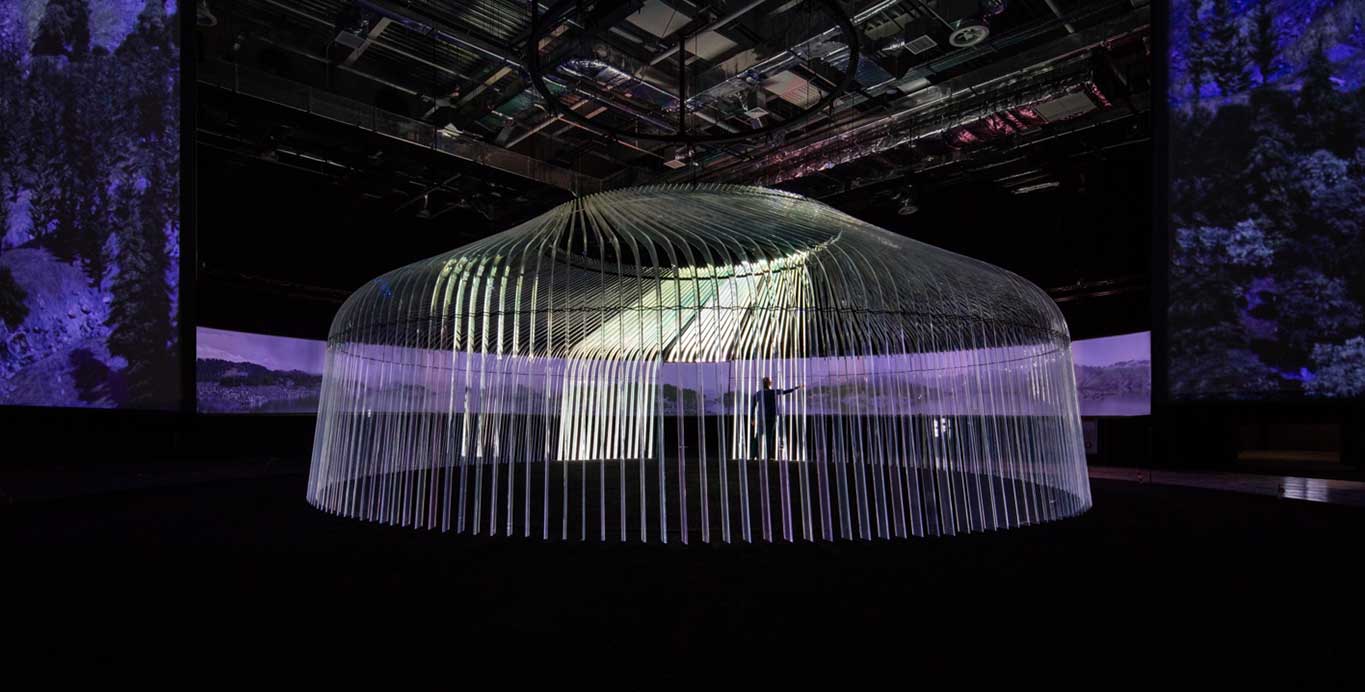
Germany
Under the slogan “Energy on Track”, this pavilion concentrated on Energiewende, Germany’s transition to low carbon, environmentally sound, reliable and affordable energy supplies. A compelling narrative bound the entire visitor experience. It was based on the idea of zooming in – from global to local, then right down to an individual’s energy consumption. Everyone got a language-coded smartstick upon entry to activate and interact with wonderfully playful interactive experiences that combined low-tech and high tech. A compelling and delightful visitor journey.
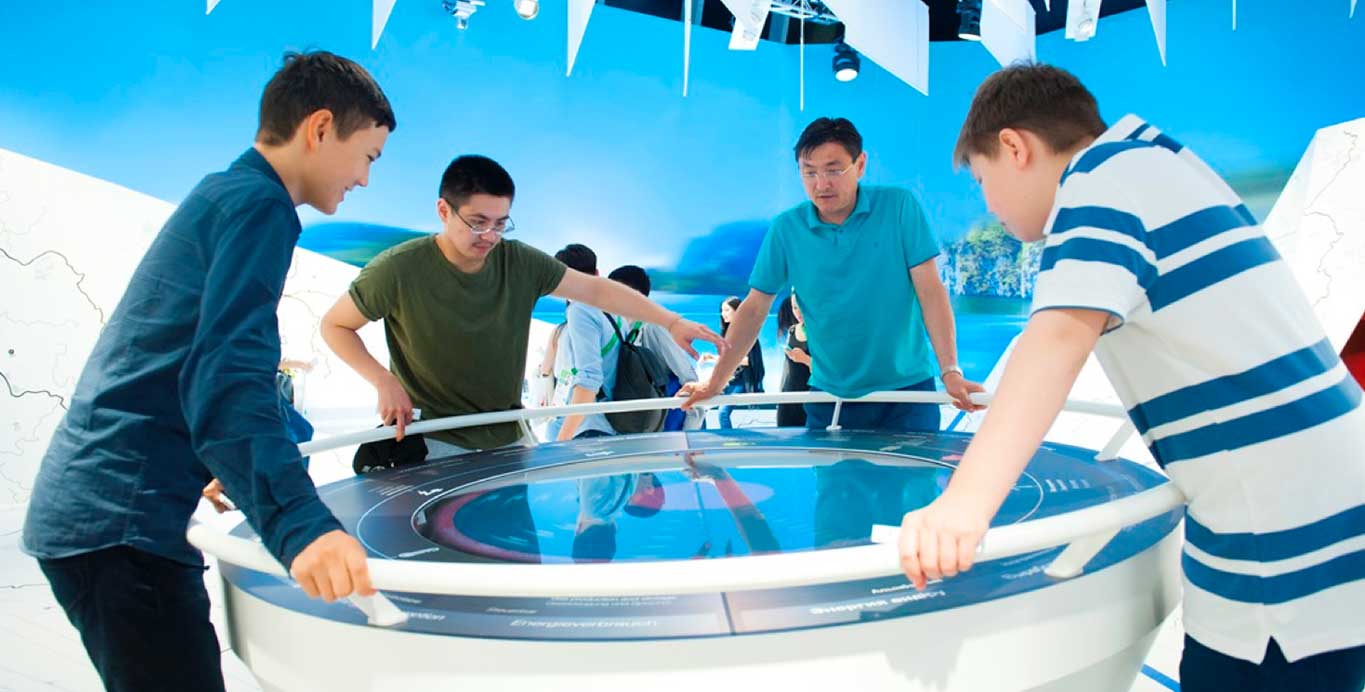
Turkey
This was an immersive audio visual extravaganza, with some unique moments of surprise. It was one of the only pavilions that extended the exterior into a physical installation. Insodoing, a grand entrance allowed visitors to peek inside the space, building curiosity and a real sense of arrival. A most unexpected approach.
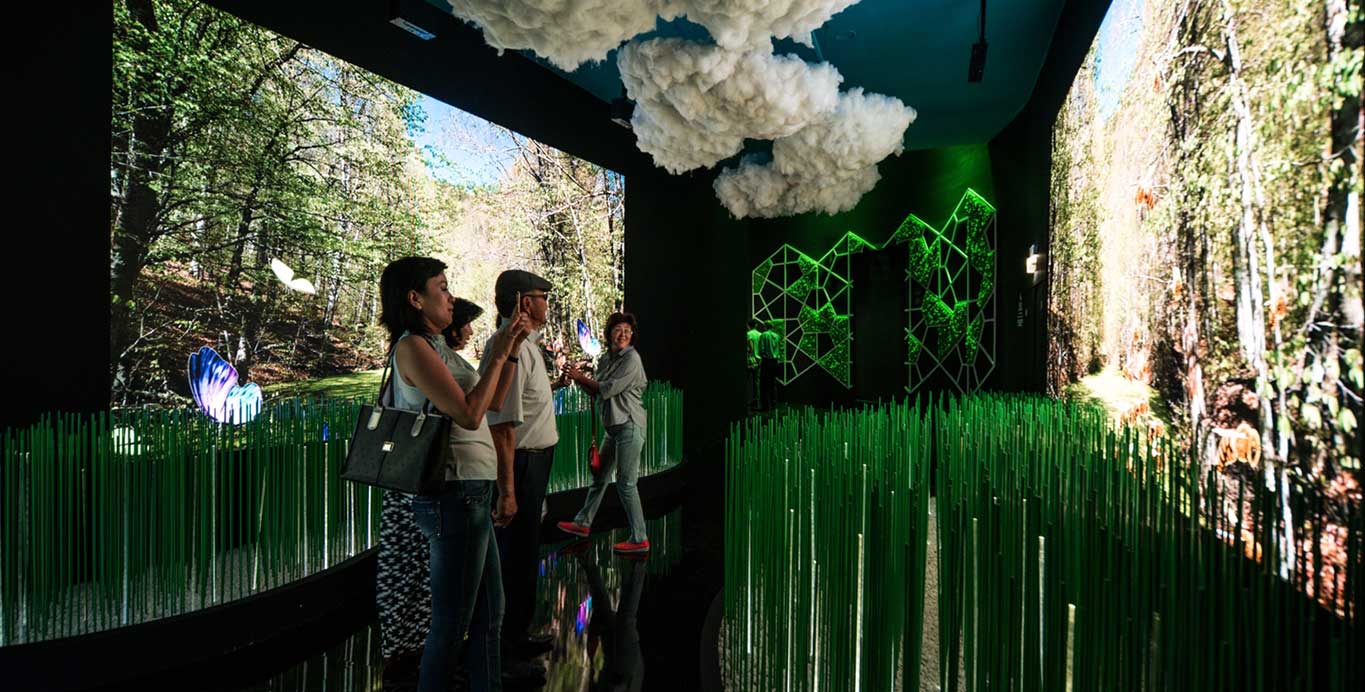
Netherlands
Bold, bright, playful graphic design used colour, contrast and simplicity to introduce an experiential identity to the entire pavilion. Recognisable as uniquely Dutch, the future energy theme was subtlely woven in. A great example of smart, low cost design.
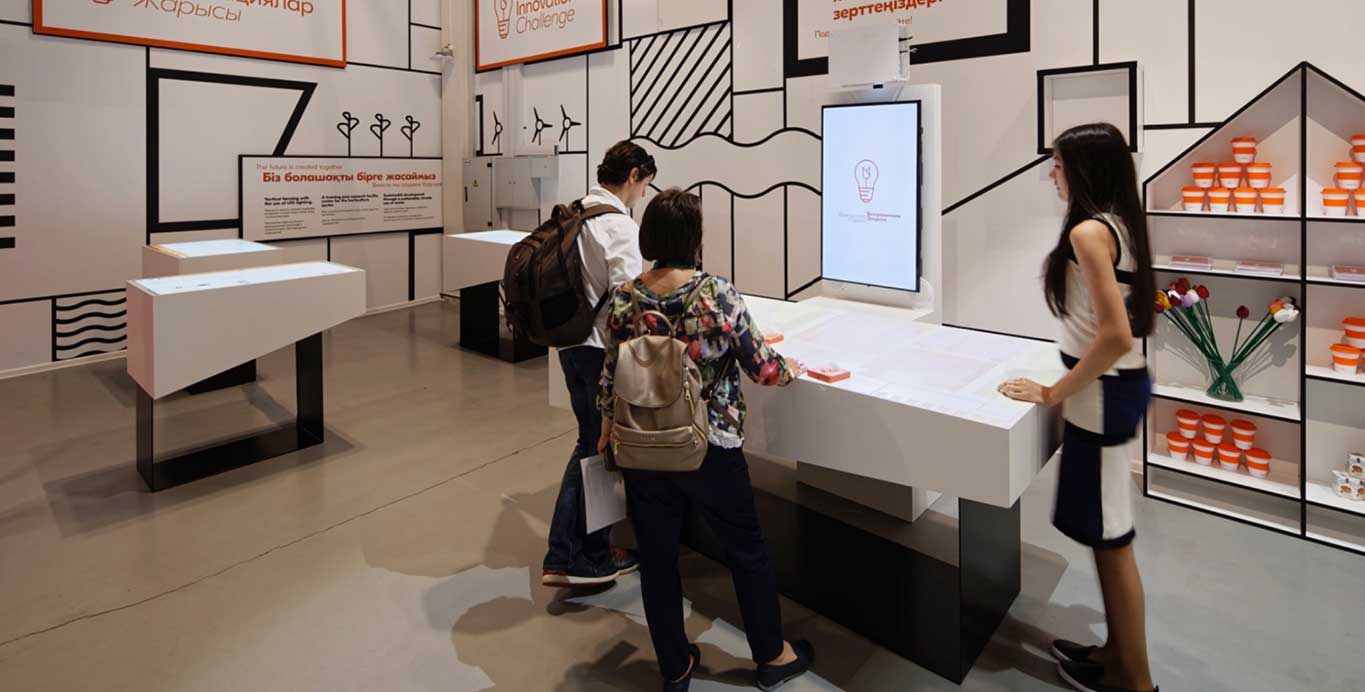
Switzerland
The Swiss Pavilion focused on efficiency and sustainability, leveraging the beautiful Swiss Alps as fertile ground for scientific research and innovation. “Flower Power” informed the overall aesthetic, and storytelling centred on renewable energy possibilities. Digital décor bloomed and blossomed in reaction to the ebb and flow of the visitors. Playful, curious, and above all, fun.
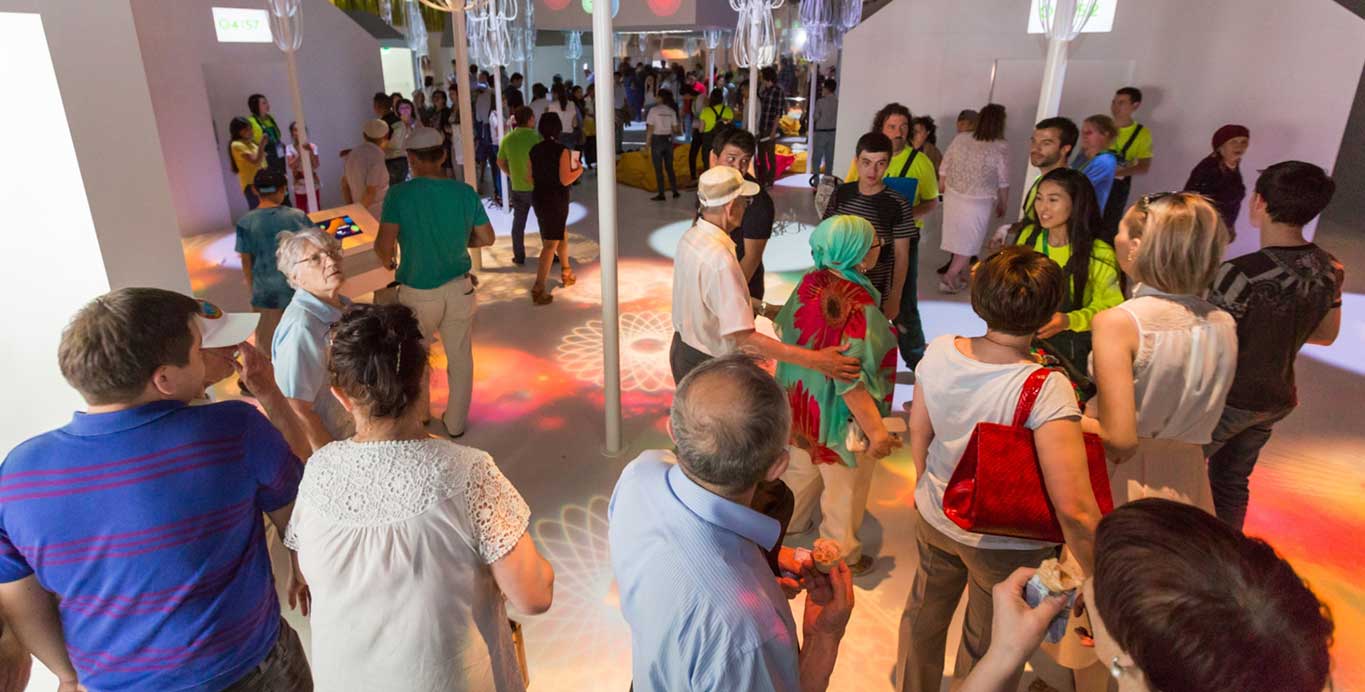
A few other notable pavilions:
• Monaco commissioned a fascinating kinetic wave installation, providing an immediate experiential focus.
• Israel’s instantly engaging visual experience was rich with audio visual content, climaxing with a compelling theatrical performance.
• Qatar’s shimmering exterior facade was a great interpretation of energy.
We’re already looking forward to visiting Expo 2020 Dubai, but if you can’t wait till then take a look at Expo Awards 2017 results!